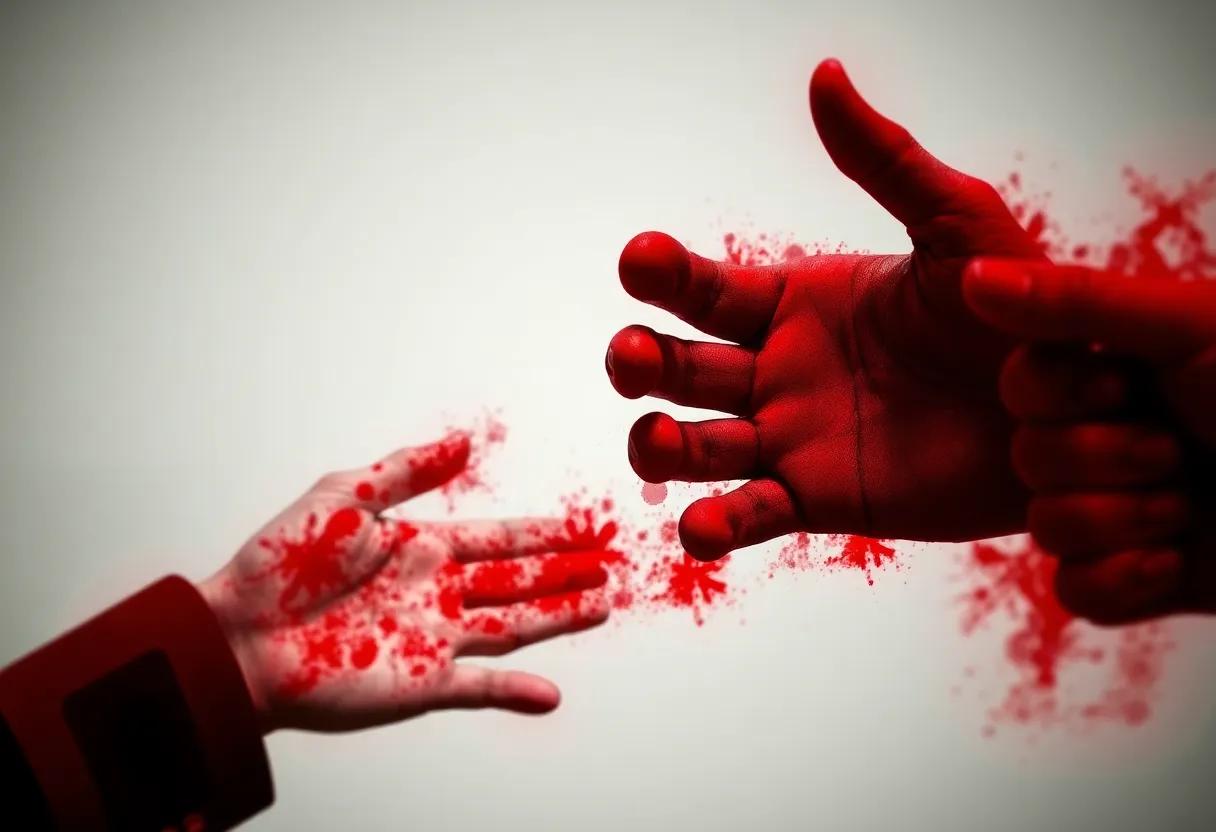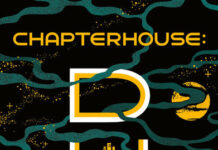In the vast landscape of memoirs that bear witness to human endurance adn the shadows of history, Roméo Dallaire’s narrative stands as a haunting testament to the fragile interplay of hope and horror. invites readers to journey beyond the headlines and official reports, delving into the deeply personal reflections of a man who faced the unimaginable. This review seeks to navigate the emotional and historical terrain of Dallaire’s account,exploring how his story illuminates the complexities of humanitarian intervention,moral courage,and the lasting scars of conflict.
Exploring the Dual Themes of Hope and Horror in Roméo Dallaire’s Gripping Memoir

Roméo dallaire’s memoir masterfully weaves together the harrowing realities of genocide with moments of unexpected resilience, capturing the fragile interplay between despair and optimism. Through vivid narratives and raw emotional insights,readers are drawn into an experience where hope does not simply coexist with horror-it defies it,shimmering as a fragile lifeline amid devastating chaos. This balance is not just a literary device but a profound exploration of human endurance and the moral weight carried by those who witness tragedy firsthand.
The memoir invites reflection on several key themes that resonate deeply with anyone confronting trauma or injustice:
- Compassion in Crisis: Acts of kindness and solidarity even in the darkest moments.
- The Burden of Witnessing: The emotional and psychological toll of bearing witness to unspeakable atrocities.
- Unyielding Spirit: How hope fuels action despite overwhelming odds.
To illustrate this complex relationship, consider the table below summarizing core emotional responses featured in the memoir:
| Theme | Emotion Evoked | Impact on Narrative |
|---|---|---|
| Horror | Shock, grief, anger | Confronts readers with brutal reality |
| Hope | Resilience, courage, empathy | Offers a path toward healing and change |
A Deep Dive into the Emotional Landscape That Shapes the Narrative’s Powerful Impact
Roméo Dallaire’s memoir pulses with a complex spectrum of emotions, weaving hope and horror into a fabric that challenges readers at every turn. The emotional landscape is not just a backdrop but an active force that shapes the narrative’s resonance. From the initial idealism of peacekeeping efforts to the shattering realities of conflict and impotence, the memoir captures the gradual erosion of innocence. This emotional shift is underscored by moments of profound despair but also by glimmers of humanity and resilience that refuse to be extinguished. The reader is drawn into a world where moral ambiguity, frustration, and empathy coexist, creating a dissonance that demands reflection.
- Hope: Visions of peace, commitment to duty, human connection amidst chaos
- Horror: Graphic accounts of violence, moral dilemmas, personal and collective loss
- Reflection: Internal battles, psychological scars, and enduring questions about duty
This emotional interplay is further illuminated when examining the memoir’s structure, where moments of calm are punctuated by sudden jolts of brutality. The contrasting rhythms reflect the unpredictability of war and the psychological toll exacted on Dallaire and his team. Consider the following emotional cadence mapped against key narrative phases:
| Phase | Dominant emotion | Effect on Narrative |
|---|---|---|
| Deployment | Hope | Sets idealistic tone |
| Conflict Escalation | Fear & Uncertainty | Builds tension |
| Genocide Unfolding | Horror & Despair | Heightens emotional impact |
| Aftermath | Reflection & resilience | Offers closure and hope |
The Role of Leadership and Moral Courage Amidst Crisis and Catastrophe Unfolded
In the darkest throes of human suffering, leadership transcends mere command-it becomes an act of profound moral courage. Roméo Dallaire’s memoir shines a brutal light on this,revealing how steadfast conviction and ethical resolve shape decisions when the world’s worst atrocities unfold. Leaders navigating crises are often trapped between political constraints and humanistic imperatives, where every choice carries life-or-death consequences. Dallaire exemplifies this tension, embodying the painful clarity that true leadership demands not only strategic acumen but the willingness to stand firm against overwhelming odds, even when support falters.
Key qualities that define courageous leadership in catastrophe include:
- Unwavering empathy amidst chaos
- Relentless advocacy for vulnerable populations
- Clarity of moral vision despite political ambiguity
- The resilience to bear witness and speak truth
| Leadership Attribute | example from Roméo Dallaire’s Experience |
|---|---|
| Empathy | Protecting children during genocide |
| Moral Clarity | Defying UN orders to intervene |
| Resilience | Enduring psychological trauma |
| Advocacy | Raising awareness post-conflict |
How Personal Trauma and Resilience Intertwine in the Author’s Reflective Journey
In Roméo Dallaire’s memoir, trauma is not depicted merely as a series of tragic events but rather as a complex tapestry woven with threads of profound pain and unexpected strength. His recounting of the rwandan genocide exposes the harrowing depths of human suffering, yet within the same narrative emerges a steadfast resilience that defies despair. This interplay between horror and hope manifests through vivid memories and reflective insights, where moments of vulnerability give way to an unyielding commitment to healing and justice. Dallaire’s journey reveals how confronting trauma head-on can serve as the foundation for cultivating an indomitable spirit.
His reflections also highlight the transformative power of resilience as an active,evolving process rather than a fixed state. Key elements that nurture this resilience include:
- Connection: Leaning on supportive relationships and shared humanity
- meaning-making: Finding purpose beyond painful experiences
- Self-compassion: embracing imperfections and psychological scars
- Advocacy: Channeling personal pain into collective action
| Trauma Aspect | Resilience Response |
|---|---|
| Witnessing Atrocities | Commitment to bearing testimony |
| Personal Loss | Seeking connection and healing |
| Mental Health Struggles | embracing vulnerability and recovery |
| Isolation | Building community and advocacy networks |
The Historical Context Behind the Tragedy and Its Influence on Contemporary Understanding
The tragedy that Roméo Dallaire recounts is rooted in a complex web of colonial history, ethnic tensions, and geopolitical neglect. The scars left by colonial powers, particularly European powers carving up Africa with little regard for indigenous social structures, laid a foundation of mistrust and division. These fractures were exacerbated by Cold War dynamics, where global superpowers prioritized strategic interests over humanitarian concerns. The resulting power vacuum and simmering resentment ignited one of the most horrific genocides of the 20th century, a catastrophe witnessed and partially documented through the eyes of Dallaire, whose memoir provides an intimate lens into events frequently enough reduced to statistics and headlines.
Understanding this tragedy requires grappling with the following enduring themes, which continue to shape contemporary discourse:
- The Role of International Indifference: Highlighting how global institutions frequently enough falter in the face of mass atrocities.
- Ethnic Polarization: Examining how identity politics can be weaponized with devastating consequences.
- Humanitarian Intervention Challenges: Reflecting on the limits of peacekeeping mandates and the moral dilemmas faced by forces on the ground.
These elements not only contextualize the historical events but also serve as cautionary tales for modern policymakers and human rights advocates. By revisiting this dark chapter, dallaire’s memoir encourages a vigilant and informed perspective, promoting a collective responsibility that transcends borders and epochs.
| Aspect | Historical Reality | Contemporary impact |
|---|---|---|
| Colonial Legacy | artificial borders & imposed hierarchies | Ongoing ethnic conflicts and mistrust |
| International Response | Delayed peacekeeping and limited mandates | Stronger advocacy for proactive intervention |
| Memory & Justice | Initial silence and denial | Focus on reconciliation and accountability |
Stylistic Choices That Elevate the Memoir Beyond Typical War Testimonies
Roméo Dallaire’s memoir transcends the typical recounting of war experiences through its masterful use of evocative language and reflective nuance. Rather than simply presenting facts, Dallaire delves deep into the emotional and psychological terrain of conflict, painting portraits of despair intertwined with flickers of hope. His prose is carefully measured, blending moments of stark brutal honesty with introspective passages that invite readers to ponder the moral complexities of leadership and humanity under siege. This stylistic choice transforms the memoir from a mere testimony into an immersive narrative that speaks not just to historians, but to anyone grappling with the fragility of the human spirit.
Another element that elevates the memoir is Dallaire’s strategic use of fragmented chronology and varied pacing, which mirror the chaos and unpredictability of the events he describes. The reader is carried through a swirling timeline that reflects the disorientation experienced by those on the front lines, while intermittent slower passages provide space for reflection and context. Presented below is a glimpse of how these stylistic devices interplay:
| Stylistic Device | Purpose | Effect |
|---|---|---|
| Fragmented Chronology | Reflects disorientation and unpredictability | Engages reader emotionally, deepens immersion |
| evocative Language | Conveys emotional depth beyond facts | Transforms narrative into a living experience |
| Varied Pacing | Balances tension with moments of reflection | Allows understanding of complex moral questions |
Through these carefully calibrated choices, the memoir stands apart-crafted not only as a historical account, but also as a profound literary work that provokes thought and stirs empathy in equal measure.
The Ethical Questions Raised About International Responsibility and Human Rights
Roméo dallaire’s memoir forcefully challenges readers to confront the profound moral dilemmas that arise when international actors face crises of human rights abuses. The harrowing depiction of bureaucratic inertia versus urgent humanitarian need exposes a grim reality: power structures often falter when action is most critical. the memoir does not merely recount failure; it probes the underlying questions of who holds responsibility when lives hang in the balance. This interrogation calls into question the very frameworks that govern peacekeeping missions and the prioritization of sovereignty over human dignity.
Engaging with these challenging narratives invites reflection on key ethical tensions:
- The cost of neutrality: Is withholding intervention ever justified when genocide looms?
- Global accountability: How do nations reconcile self-interest with moral obligation?
- Individual versus collective responsibility: What roles do soldiers,leaders,and civilians play in confronting atrocity?
| Ethical Challenge | Dallaire’s Reflection |
|---|---|
| Obedience to Orders | When following commands contradicts preventing genocide. |
| International Inaction | The paralysis of global institutions amid overwhelming evidence. |
| Moral Injury | The personal toll on those forced to witness or endure atrocities. |
Lessons for Policy Makers and Humanitarians Drawn from Dallaire’s First-Hand Experiences
Roméo Dallaire’s harrowing account offers indispensable insights that policy makers and humanitarian workers must internalize to better navigate the complexities of crisis zones. One of the most profound lessons is the critical need for early, decisive intervention paired with unwavering political will. Dallaire’s experience reveals that ambiguous mandates and delayed international responses not only prolong suffering but also escalate human tragedy.Embedding clear, robust mandates within peacekeeping operations ensures that ground realities are acknowledged and adequately addressed. Additionally, fostering close communication channels between field operatives and international bodies can prevent the devastating disconnect often seen in conflict response scenarios.
Moreover,the memoir underscores the importance of integrating mental health support for responders as an essential component of humanitarian missions.Witnessing the depths of human cruelty exacts a heavy psychological toll that, if ignored, compromises the effectiveness of even the most well-equipped teams. This holistic approach must prioritize resilience training,trauma counseling,and enduring support networks. Below is a concise framework summarizing key actionable takeaways:
| Critical Focus | Essential Actions |
|---|---|
| Mandate Clarity | defined objectives enabling proactive engagement |
| Political Commitment | Timely authorization and resource allocation |
| Communication | Continuous feedback loops between field and headquarters |
| Mental Health | Structured support and resilience-building for teams |
| Local Engagement | Collaborative approaches respecting cultural contexts |
Balancing Raw Reality with Inspirational Messages: A Delicate Narrative dance
roméo Dallaire’s memoir masterfully walks a tightrope,presenting the raw horrors of conflict while interweaving threads of hope that refuse to be snuffed out. His narrative does not shy away from the harrowing truth-the visceral, unfiltered accounts of human suffering and moral dilemmas faced on the frontlines. Yet, within this turbulent sea of despair, glimmers of resilience, humanity, and the possibility of redemption emerge. This duality invites readers not only to witness trauma but to engage with the enduring spirit that pushes beyond it.
The power of Dallaire’s storytelling lies in its deliberate balance,achieved through subtle narrative shifts and poignant reflections. Key elements that anchor this balance include:
- Honest Vulnerability: Sharing personal flaws alongside leadership strengths creates a relatable and human perspective.
- Moments of Compassion: Small acts of kindness accentuate the weight of the broader tragedy.
- calls to Action: Urging global responsibility grounds the memoir in a future-oriented hope.
| Aspect | Narrative Effect |
|---|---|
| Graphic Descriptions | Confronts readers with the stark reality of genocide |
| reflective Passages | Offers space for ethical contemplation and healing |
| Motivational Insights | Inspires action and empathy beyond the memoir |
Visual Imagery and Symbolism That Bring the memoir’s Themes Vividly to Life
Roméo Dallaire’s memoir is a tapestry woven with vivid visual imagery that plunges readers into the harrowing realities of conflict while simultaneously offering glimmers of hope. His descriptions translate the overwhelming chaos of genocide into unforgettable scenes - from the stark, desolate landscapes scarred by violence to the haunting eyes of survivors that speak volumes beyond words.These images do not merely illustrate events; they serve as powerful symbols of resilience and despair, compelling readers to confront the duality of human nature amidst catastrophic loss.
Throughout the memoir, symbolic elements subtly underscore key themes and emotional undercurrents. For instance:
- The color red – appearing not only in blood but also in worn flags and tattered garments – epitomizes sacrifice and the pervasive presence of death.
- Flickering candlelight – moments of quiet reflection amid turmoil – represents fragile hope and the persistence of humanity.
- Broken communication devices, like radios and telephones, symbolize the isolation and desperation felt by those trying to bridge impossible divides.
By blending these potent images with evocative symbolism, Dallaire’s narrative transcends mere recounting, becoming a vivid psychological landscape where every detail reverberates with meaning.
The Memoir’s Contribution to Literature on Genocide and Peacekeeping Operations
Dallaire’s memoir stands as a seminal work in the ever-evolving tapestry of genocide literature and peacekeeping discourse. It offers an intimate glimpse into the human cost of international conflict, bridging the gap between cold historical facts and the visceral realities experienced by those on the ground. His narrative transcends mere documentation,imbuing the grim tales of the Rwandan Genocide with a haunting sense of moral urgency. What makes this memoir especially poignant is its dual focus: it not only chronicles the failures of international systems but also highlights the resilience of the human spirit amidst unfathomable despair.
Through vivid storytelling, the memoir enriches our understanding of peacekeeping with nuanced perspectives. It showcases the complexities faced by peacekeepers, torn between bureaucratic constraints and ethical imperatives. key themes frequently explored include:
- Psychological toll: The long-lasting trauma borne by peacekeepers and survivors alike.
- International accountability: The shift in global attitudes toward intervention and sovereignty.
- Moral ambiguity: The difficult choices when peacekeeping missions confront active genocide.
| Aspect | Memoir’s Insight |
|---|---|
| Peacekeeper’s Role | From protector to witness of helplessness |
| Global Response | Highlighting delays and political inertia |
| Human Resilience | Stories of survival amid chaos |
By weaving personal testimony with broader geopolitical reflections,this work challenges readers to rethink the nature of intervention and the urgent necessity of reform in peacekeeping protocols. roméo Dallaire’s memoir is not only a historical account but a catalyst for dialog, pushing the boundaries of how literature contributes to collective memory, justice, and ultimately, the pursuit of lasting peace.
Why This Book Should Be Essential Reading for Advocates of Global Justice and Peace
Roméo Dallaire’s memoir offers more than a recounting of tragedy-it is a powerful testament to the resilience of humanity in the face of unimaginable darkness. Through his vivid storytelling, advocates gain intimate access to the ethical dilemmas, bureaucratic inertia, and personal anguish that underpin global conflicts.This firsthand perspective is crucial for anyone passionate about justice and peace, as it challenges complacency and urges a closer examination of international responsibility and intervention. The memoir serves as a stark reminder that hope and horror frequently enough coexist, demanding nuanced, compassionate approaches rather than simplistic solutions.
Moreover, the book is an indispensable tool for understanding the complexities of peacekeeping and the profound consequences of indifference. It encourages readers to confront uncomfortable truths and inspires a commitment to proactive engagement. Key takeaways include:
- The human cost of delayed international action – illustrating why timely intervention matters.
- The moral ambiguity faced by peacekeepers - highlighting the thin line between neutrality and complicity.
- The necessity of systemic reform – pressing for accountability within international organizations.
- Personal courage and empathy – as foundational pillars for building sustainable justice.
| Theme | Insight |
|---|---|
| Responsibility | Global actors must move beyond rhetoric to meaningful action. |
| Resilience | Survivors and peacekeepers alike show profound endurance amid crisis. |
| Justice | True reckoning requires confronting systemic failures head on. |
An Insightful Look at Roméo Dallaire’s Life, Career, and Lasting Legacy Through His Own Words
Through the lens of his memoirs, Roméo Dallaire reveals a tapestry woven with the threads of *courage*, *anguish*, and profound humanity. His vivid recounting of the Rwandan genocide transcends mere historical documentation, offering readers an intimate dialogue with the moral complexities faced by a commander bound by duty yet shackled by international apathy.dallaire’s voice is both a witness and a witness-bearer, urging us to confront the uncomfortable truths of global responsibility and broken promises. His words create a tension between the horror witnessed and the glimmer of hope nurtured amidst despair, inviting reflection on how resilience can emerge even from the darkest chapters of human conflict.
Beyond the battlefield,his story is a profound meditation on leadership,trauma,and the quest for healing. Dallaire’s narrative challenges us to recognize the weight of silent struggles carried long after peace treaties are signed. In his own words, several themes illuminate his legacy:
- The burden of command: the ethical dilemmas and isolation inherent in leadership during crisis.
- The fragility of international intervention: A critique of political inertia in humanitarian disasters.
- The path to recovery: Embracing vulnerability and advocating for mental health awareness among veterans.
- Enduring hope: A call for empathy and active engagement in global peace efforts.
| Key Aspect | Dallaire’s Reflection |
|---|---|
| Moral Responsibility | “Sometimes the greatest failure is to remain silent.” |
| Leadership | “Leadership means bearing the weight of the world when others can’t see the storm.” |
| Healing | “True courage is found in facing the shadows within ourselves.” |
Unveiling Hope and Horror stands as more than just a memoir-it is a solemn mirror held up to humanity’s capacity for both profound courage and devastating failure. Roméo Dallaire’s reflections invite readers not only to witness the harrowing realities he endured but also to ponder the fragile threads of hope that persist amid despair. whether approached as a historical account, a personal testimony, or a call to conscience, this memoir leaves an indelible mark-challenging us to remember, to learn, and ultimately, to change.











